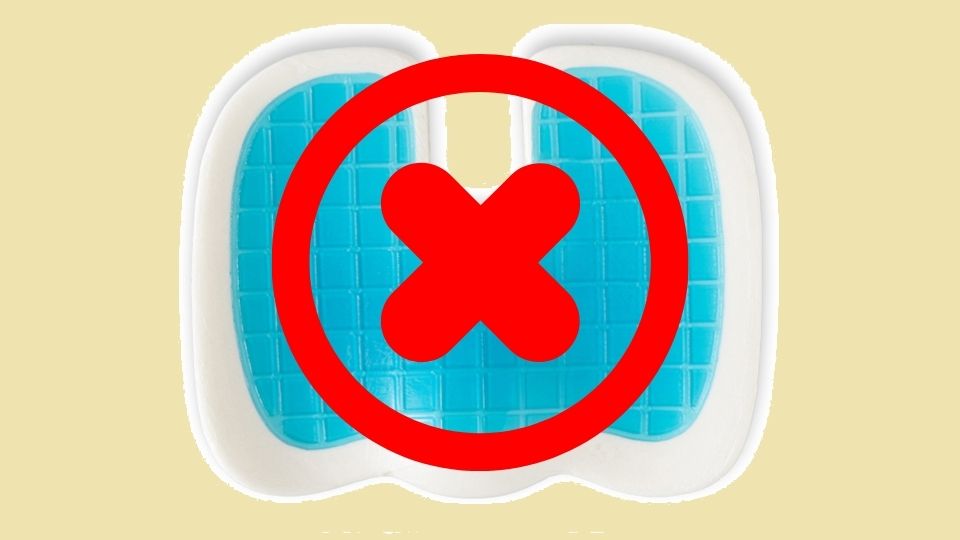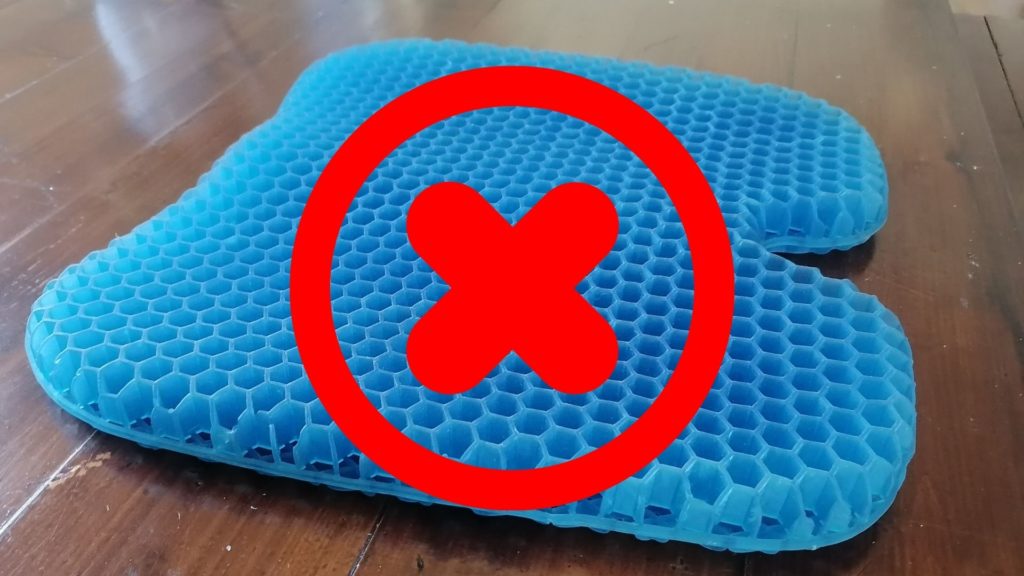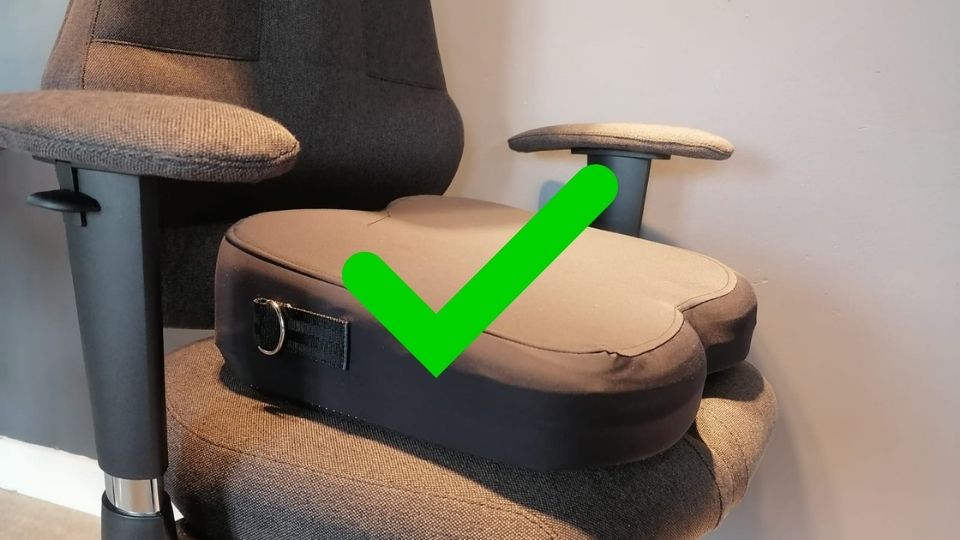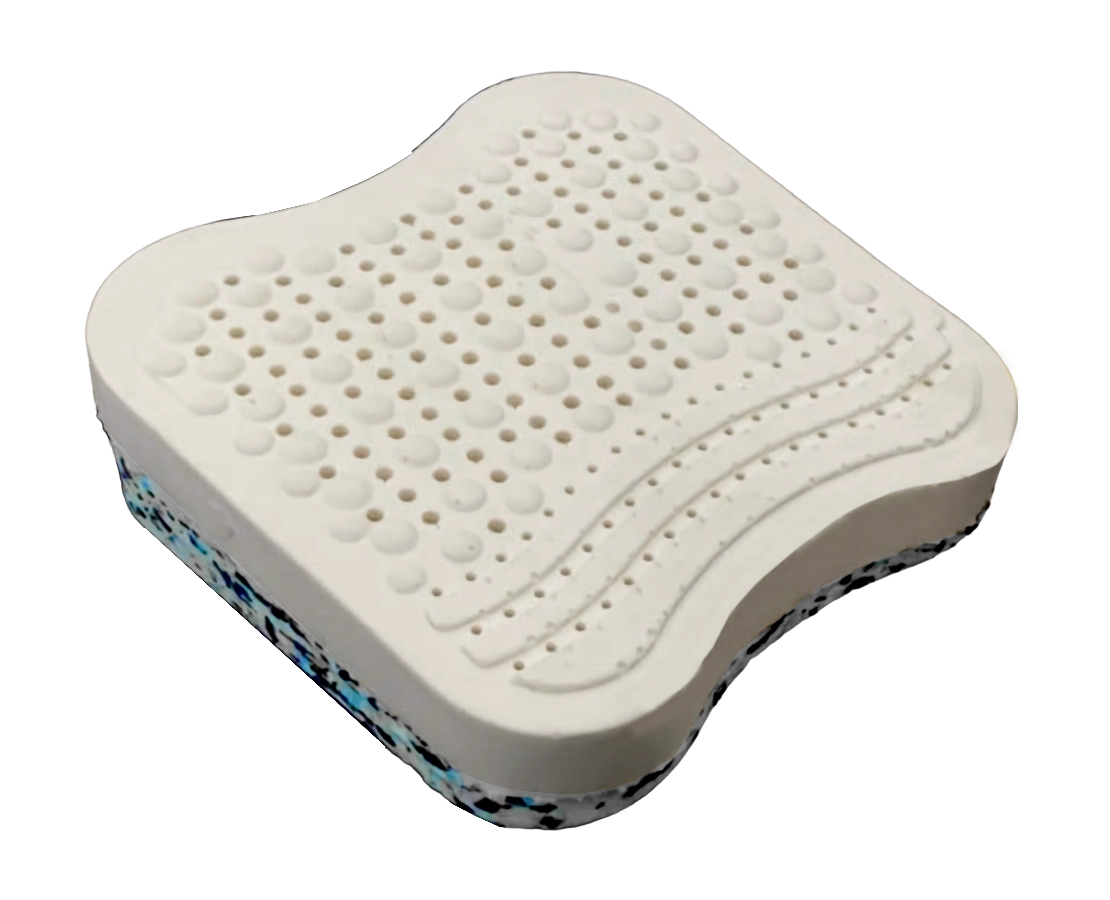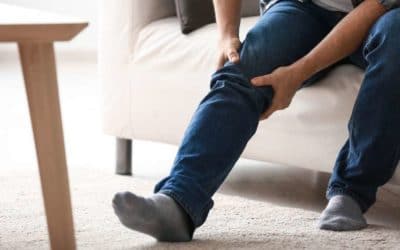Having a hip replacement is one of the most common surgeries. They’re usually pretty easy cases if everything goes as planned, but there’s always a risk following any operation – don’t take anything lightly when surgery day comes around! I often get asked about how patients should sit down after surgery because doctors recommend different things for sitting depending on which type of hip replacement you had.
As a general rule, if you had hip replacement surgery, make sure you have strong armrests and that your seat is firm, and make sure your hips are higher than your knees and adjusted to a more significant 90-degree angle. Follow your doctor’s or therapist’s weight-bearing instructions.
Having treated postsurgical patients who had hip replacements for thirty years, I’d like to help you learn how to avoid potential pain or dislocation while sitting and how the right seating can protect you from low back pain. I’m also a trained ergonomist and have published a book on posture; I also have a 15K+ subscriber YouTube Channel on posture, so I know a thing or two about maintaining healthy alignment. Not to mention, I successfully launched a Kickstarter campaign for a posture-correcting device. In short, I’m confident that I can provide you with some helpful advice and tips. Keep reading to learn more!
It is important to be mindful of your seating positions after surgery on your hip. To avoid any potential issues, it may be helpful to consult with your doctor for specific guidance and recommendations based on the type of surgery you had and your recovery. It is important to be aware of any potential movements or positioning that may cause discomfort or potential complications.
Dislocation of the hip artificial joint occurs because the joint is positioned awkwardly. Most artificial joint dislocations are caused by an excessive thigh bend or medial rotation.
Best Seat Cushion for Hip SupportDoctor's Recommendation
Black Friday Offer!
Get 35% off Orthopedic Seat Cushion
Product DetailsResearch-based Design
Recommended ForBack Discomfort
Video Guide
Video Guide
Your doctor may vary these recommendations depending on what type of surgery is done and how well it will heal afterwards. Make sure to coordinate this information with them:
Bedrest of hip replacement surgery. It may be possible to return to sitting for extended periods after a period of rest, however, the length of time required for recovery can vary depending on the individual and their specific situation. It is important to be aware of any potential issues or complications that may arise and to consult with your doctor for guidance. Additionally, it is important to be mindful of the position of your legs during this time to avoid discomfort or swelling.
Avoid certain movements. After a hip replacement, it is important to be mindful of certain movements and positions that may cause discomfort or potential complications. It is important to consult with your doctor for guidance on what movements to avoid and what positions are safe. In particular, it is important to be aware of the angle at which you are sitting, as certain positions may increase the risk of joint dislocation.
Refrain from certain types of seating. After hip surgery, it may be helpful to be mindful of the type of seating you are using. Certain types of seating may increase the risk of discomfort or potential complications. It is important to consult with your doctor for guidance on what type of seating is safe and what to avoid. Additionally, it is important to be mindful of the position of your body while sitting, as certain positions may increase the risk of discomfort or potential complications.
Sitting at the toilet. It is generally recommended to use a raised toilet seat after hip replacement surgery. Additionally, when using a toilet seat, it is important to ensure that the knees are at the same level as the pelvis.

When Can You Sit on a Normal Chair After Hip Surgery
As a general rule, it is usually essential to wait until your body has healed before sitting in a chair after hip replacement surgery.
As a general rule, there is a general guideline that after hip surgery, one can sit on a standard chair after a certain period of time. The specific timing will vary depending on the surgery and it is best to consult with your doctor for personalized instructions.
It is generally recommended that you avoid sitting for long periods during the healing process. This helps to prevent blood clots and other complications. If you need to sit for an extended period, take frequent breaks and move around as much as possible. Movement is always a good idea. In fact, one study indicated that total hip replacement followed by physical therapy decreases joint pain and improves function in patients with osteoarthritis of the hip.
Once your doctor gives you the green light, you can slowly start incorporating sitting into your daily routine. Start with short periods and gradually increase the time you spend sitting each day. With time and patience, you will eventually be able to sit in a chair just like before your surgery.
If you are into super easy and inexpensive alternatives to office chairs, I wrote a fantastic article on how and why you should consider these options for back pain, and I encourage you to read it!
Best Sitting Position After Hip Surgery
Ensure that you are seated correctly. For maximum comfort, adjust your seat height, depth, forward tilt, and lumbar support. Here are four things to consider about your chair after hip replacement surgery:
Seat Height. You should choose a seat height that is comfortable for you. Your chair should be at the highest level while your feet remain flat on the ground.
Forward Seat Tilt. It may be beneficial to use a chair with a slight forward tilt to reduce pain in your backside. This can help alleviate stress on the spine and promote blood flow to both legs while sitting for extended periods. I explain the concept of a forward seat tilt on a TV show HERE. Additionally, maintaining a good posture while seated can also help prevent muscle strain throughout the day.
Ideal Seat Pan Depth. From my experience, I have found that adjusting the depth of the seat on an ergonomic chair can be beneficial for comfort. The surface area of the seat plays a key role in providing comfort, having more surface area can reduce pressure points.
- Short seat depths may aggravate SI joint pain. If you sit for too long, your legs and feet will not receive sufficient blood flow.
- How to get the correct seating depth: Place your backrest firmly against your back. Your knees and seat edge should be separated by three to five centimetres.
Lumbar Support. The lumbar support should be placed around the middle of the lower back (lumbar), depending on the width of your backrest.
Improperly fit lumbar support can exacerbate the curve in the spine (lordosis) if it is placed too high. Sciatica or Back pain may result from inadequate lumbar support since the spine can be overloaded.
I’ve written a complete hands-on review about the best sitting position for sciatica, and here is what I tested best with my sciatica patients.
People may have differing opinions on how supportive lumbar support should be, but regardless, there is a wide variety of lumbar support available. You can use a towel rolled up or a small cushion in place of lumbar support. Here’s an opportunity to put your creativity to good use.
All Day Comfort & Support
Here’s What I make for My Post Surgical Patients:
To accommodate your seating preferences effectively, focus on various factors, such as chair customization. Numerous techniques can be employed, including adding an ergonomic cushion and lumbar support. These additions alleviate pressure on your back and legs, improving comfort and posture during prolonged sitting. Additionally, ensure your feet are flat on the ground and maintain adequate distance between your chair and desk. By adhering to these suggestions, a standard rigid chair can be transformed into a cozy ergonomic sanctuary that supports long-term health and well-being.
Ergonomic Seating Accessory
An ergonomic seat wedge (above) can be utilized to properly align your spine and enhance balance. This well-designed natural latex accessory aids in reinforcing core muscles while easing tension in other body areas, such as the shoulders and neck. Moreover, sitting upright is gentler on your hips and knees, as it activates more muscle groups concurrently compared to leaning back against a soft object. This upright posture deters stress-causing habits that individuals may unintentionally develop while working.
Best Home Seat Cushion Following Hip Replacement Surgery For Recovery
The types of cushions I do not recommend will be discussed first. Foams include memory foam, polyurethane foam, and gel foam. I will highlight the problems that I found in the various types of cushions in the next few paragraphs below:
Seat Cushion Made of Memory Foam for Hip Replacement Surgery
I’ve written a complete hands-on review about memory foam, and here are some of the shocking issues I ran into in this post!
Several factors make memory foam an inappropriate choice for seating cushions after hip replacement:
- Response time is too slow. Responsive cushions will reduce the pain in and around your hips. Foam has characteristics such as response time and responsiveness. Memory foam is ineffective for hip region pain due to its inherent inflexibility.
- Heat-retaining. Memory foam retains heat, so those who sit on it may feel uncomfortable. You don’t need this after hip replacement surgery!
- Chemicals! The chemical polyurethane is made from crude oil after it has been refined. You’ll find PVC, antimony trioxide, polyurethane, and formaldehyde in memory foam.
- Overuse of fire retardants.
Black Friday: 35% Off Today
Typical Delivery 1-3 Days
Seat Cushion Made of Gel Foam for Hip Replacement Surgery
Gel Cushions. Polymer cushions are flat or contoured and can be made from polymer or foam. They won’t be damaged if their plastic container ruptures since they do not flow like liquid gels.
No liquid gel flows like a slab of gel and no product absorbs shocks or reduces pressure like the slabs currently on the market.
Our patients tested hundreds of gel cushions, but these Gel cushions did not provide as much comfort or pressure point relief that we expected. Gel cushions shaped like honeycombs did not seem to be comfortable for many of our patients.
Seat Cushion Made of Natural Latex Foam for Hip Replacement Surgery
After comparing different materials, natural latex was determined to be a suitable seating material for certain preferences. The reasons for this may include:
- Its ability to provide consistent support and distribute pressure evenly
- Natural latex has incredible durability and resilience
- Fantastic potential for customization.
- Natural latex is made from natural materials and may be considered non-toxic and eco-friendly
- Provides good air circulation.
- It is resistant to bacteria, mold, and dust mites.
Seat Cushion to Use After a Hip Replacement Surgery
Many seat cushions are not designed to make you comfortable or healthy. Engaging your core muscles after surgery is essential, so choosing the right seat cushion can make a huge difference in your life.
I’ve written a complete hands-on review of why memory foam seat cushions don’t work, and here are some of the shocking issues I ran into in this post!
It’s no secret that sitting for long periods is terrible for your health, especially after hip replacement surgery! Studies have shown that too much time spent sitting can lead to various problems, including back pain, weight gain, and an increased risk of early death. However, a simple solution can help offset the adverse effects of sitting: using a seat cushion.
Ergonomic seat cushions are designed to provide support and comfort while sitting. They may help to distribute pressure evenly and promote good posture. This may counterbalance asymmetric limb loading that persists well after unilateral total hip replacement surgery. If you’re looking for a seat cushion, one option is a design made of high-density natural latex foam with a contoured design. This cushion is designed to provide support for sitting for extended periods of time.
All Day Comfort & Support
Also, if you are into inexpensive alternatives to office chairs, I wrote a fascinating article on how and why you should consider these options for weak buttocks muscles. I encourage you to read it!

I decided to create a seat cushion based on my research and testing it with different materials and designs. After testing, I found that this design provides comfort and support and my users were satisfied with it. The design is ergonomic and intended to provide spinal alignment and support. The end result is a seat cushion that aims to improve posture and provide comfort while sitting.
An ergonomic seat cushion can be beneficial in providing support and comfort while sitting. As a result of my experience as a chiropractor, I created a seat cushion that aims to provide support, and comfort and promotes good posture while sitting.
After testing many different prototypes, I found a cushion that met my preferences. The cushion is made of natural latex, which is more supportive than other types of foam. It also has a higher density, which helps to promote good posture while sitting. The cushion is covered with a breathable fabric that helps to keep the user cool and comfortable. The combination of these features makes the cushion suitable for providing support and comfort while sitting.
I explain the concept of my design on a TV show HERE!
Best Seat Cushion for Hip SupportAxial Ergonomic Seat Cushion® | Seat Chair Wedge
Quick Guide: A 30-Second Summary
The Correct Way to Sleep after Hip Replacement Surgery
Following hip replacement surgery, you should consider the following when sleeping:
Back sleepers. Make sure you keep your thighs slightly apart when sleeping on your back. Place a pillow under your knees if you are on your back. You should continue this practice for six weeks at a minimum.
Side sleepers. After surgery, it is important to be cautious about sleeping habits. In the first month following surgery, it is recommended to avoid sleeping on the affected side, as it may cause joint displacement. It is recommended to sleep with a pillow between the knees to stabilize them and make sure the pillow does not move during the night. It’s important to prevent any movement that may cause joint displacement.
The best mattress after hip replacement surgery. Natural latex mattresses are generally highly pressure-relieving and supportive for patients after hip replacement surgery. The natural latex foam molds to the body, distributing weight evenly. Moreover, they are resilient, which means they offer excellent spinal support. Natural latex mattresses are incredibly comfortable because of these properties.
The better the weight distribution, the fewer pressure points form on your body, especially on your hips. You will sleep better and deeper because you won’t feel hip pain overnight.
What Is the Best Way to Get Into a Car After Undergoing Hip Surgery?
Getting into your car:
- When it’s time to get into the car, use a cane or crutch to support yourself
- Ensure the front passenger car seat is fully retracted before entering the car.
- You should park the car on a flat surface or near a curb.
- Back up to the passenger seat as you approach the car. Do not enter a car by stepping forward.
- Grab the frame of the door or the headrest with one hand. Grasp the car seat or dashboard with the other hand
- As you lower yourself to the car seat, ensure you do so slowly. Slowly move each leg into the car. Make sure your toes are facing upward.
- Place both hands on top of either armrest while you’re sitting on the seat
Getting out of your car:
- Gently swing your legs over and make sure that you are holding onto something for balance before getting out of the car
- Use a car ramp if possible so that you don’t have to step down from such a high height
- If there is no ramp available, use your cane or crutch as leverage when stepping down off of the vehicle’s running board
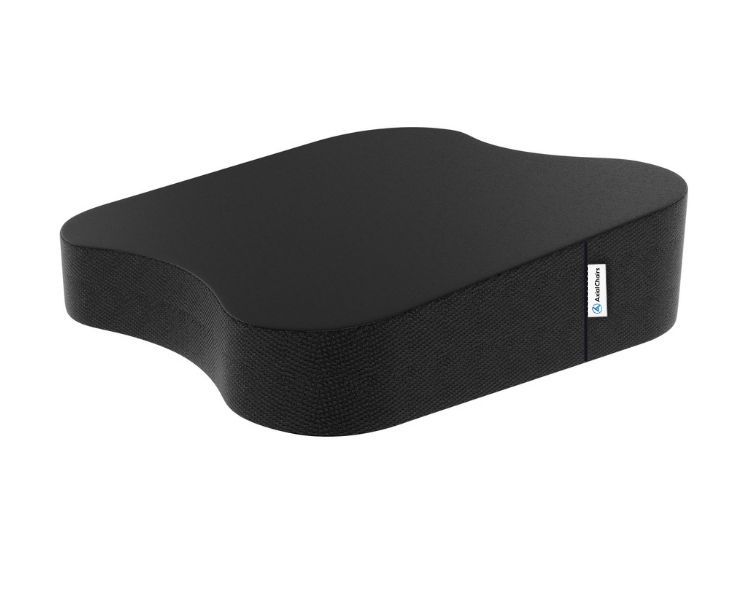
All Day Comfort & Support
Product Name
Axial Designs™ Seat Cushion
Price
$149
Warranty
1 Year
Type
Posture Wedge
Top Layer
100% Natural Latex (Molded)
Bottom Layer
High-Density Foam
Top Material
Isometric Grippy Vegan Leather
Bottom Material
Non-Slip Material
Side Material
3D Breathable Fabric
Congratulations on your successful hip replacement surgery! As an Ergonomic Seat Designer, I understand the importance of adopting healthy sitting habits to ensure prompt recovery after surgery. Here’s what I recommend:
How Long Can You Sit After Hip Replacement | US | UPMC Provider
After a hip replacement surgery, there’s no one-size-fits-all answer to how long you can sit because it depends on the individual’s recovery process, their overall health, and the specific guidelines provided by their surgeon. However, some general guidelines can be useful:
- Immediately Post-Surgery: In the initial days post-surgery, you’ll want to limit sitting to short periods, typically about 20 to 30 minutes at a time. It’s important to avoid sitting in low chairs or sofas, as bending at the hip beyond 90 degrees could potentially dislocate the new hip joint. Typically, a surgeon will advise using a raised toilet seat and avoiding crossing legs or turning the operated leg inward.
- Two to Six Weeks Post-Surgery: As you recover, you may be able to sit for longer periods gradually. You should still take regular breaks to walk around and stretch, following the specific exercises recommended by your physical therapist.
- Six Weeks Onwards: By this time, you may be able to sit for longer periods, but again, regular movement is essential. Most patients are much more mobile at this point and can resume most regular activities.
- Three Months and Beyond: Most people can resume normal sitting habits by this time, but should still maintain an active lifestyle to support overall hip health.
These are only general guidelines and can vary based on individual circumstances. It’s crucial to follow the specific instructions provided by your surgeon or physical therapist. They will monitor your progress and adjust your activity levels based on how well you’re healing.
Home Lifetime Precautions After Hip Replacement | Knee Pain Care
After hip replacement surgery, you should take precautions to avoid dislocating your new hip joint. Be mindful of how you sit down and stand up. Avoid crossing your legs or bending your hip beyond a 90-degree angle. Place a cushion or pillow between your knees while sleeping or sitting to prevent your leg from crossing over your midline.
Best Chair After Hip Replacement | Doctor Health
The best chair for you after hip replacement surgery is one that has a straight back, sturdy armrests and a firm cushion that doesn’t sink too much when you sit. As an Ergonomic Seat Designer, I recommend using a chair with a slight forward tilt to promote an upright posture and reduce strain on your back. Remember to adjust the height of the chair so that your hips are parallel to your knees, and your feet are flat on the ground.
Can I Sit With My Legs Up After Hip Replacement | Knee Care
While it may be comfortable to elevate your legs after hip replacement surgery, it’s not recommended to keep them elevated for too long. Elevating your legs for extended periods can increase swelling and stiffness. Instead, try to sit with your feet flat on the ground or with a low stool under your feet to ensure good blood flow and promote healing.
2 Weeks After Hip Replacement Surgery
After your surgical leg procedure, your doctor may advise you to avoid vigorous activities or sports for six weeks. However, it’s essential to keep active and avoid prolonged sitting or standing. An ergonomic chair can significantly reduce discomfort and promote a faster recovery. Remember to wean off any mobility aids such as crutches or walkers as recommended by your doctor, and follow your post-operation rehabilitation plan closely. Gradually increase your sitting time and take breaks to walk around and stretch your legs, neck back. Remember to listen to your body and avoid any movements or positions that cause pain or discomfort.
Takeaway
In conclusion, learning how to sit properly after a hip replacement is crucial for a successful hip replacement recovery. Keep in mind the advice given by your physical therapist and follow the enhanced recovery programme to ensure you can get back on your feet as soon as possible. Whether you’ve had a total joint replacement or hip fracture surgery, understanding the importance of maintaining the right posture and movements is vital to avoid ant exacerbation to the operated leg.
Our body part featured blog post, along with the replacement surgery video, joint replacement video, and surgery video treatment resources, provide invaluable insights into the weeks avoid vigorous activities period. The metal implant advice and implant advice recovery sections are also essential for those undergoing joint replacement surgery. Don’t forget to browse our featured popular topics and hip replacement content for further guidance on the subject. By mastering the art of sitting after a legs hip replacement or replacement surgery hip, hip replacement contents, or recovery hip replacement, you can avoid complications and set the stage for a smoother hip replacement back video recovery process.
Sources:
- Kalron, A., Tawil, H., Peleg-Shani, S. and Vatine, J.J., 2018. Effect of telerehabilitation on mobility in people after hip surgery: a pilot feasibility study. International Journal of Rehabilitation Research, 41(3), pp.244-250.
- Galea, M.P., Levinger, P., Lythgo, N., Cimoli, C., Weller, R., Tully, E., McMeeken, J. and Westh, R., 2008. A targeted home-and centre-based exercise program for people after total hip replacement: a randomized clinical trial. Archives of physical medicine and rehabilitation, 89(8), pp.1442-1447.
- Majewski, M., Bischoff-Ferrari, H.A., Grüneberg, C., Dick, W. and Allum, J.H.J., 2005. Improvements in the balance after total hip replacement. The Journal of bone and joint surgery. British volume, 87(10), pp.1337-1343.
- Talis, V.L., Grishin, A.A., Solopova, I.A., Oskanyan, T.L., Belenky, V.E. and Ivanenko, Y.P., 2008. Asymmetric leg loading during sit-to-stand, walking and quiet standing in patients after unilateral total hip replacement surgery. Clinical Biomechanics, 23(4), pp.424-433.
- Majewski, M., Bischoff-Ferrari, H.A., Grüneberg, C., Dick, W. and Allum, J.H.J., 2005. Improvements in the balance after total hip replacement. The Journal of bone and joint surgery. British volume, 87(10), pp.1337-1343.
- Ike H, Dorr LD, Trasolini N, Stefl M, McKnight B, Heckmann N (2018) Spine-pelvis-hip relationship in the functioning of a total hip replacement. J Bone Joint Surg Am 100:1606–1615. https://doi.org/10.2106/JBJS.17.00403
- Piazzolla A, Solarino G, Bizzoca D, Montemurro V, Berjano P, Lamartina C, Martini C, Moretti B (2018) Spinopelvic parameter changes and low back pain improvement due to femoral neck anteversion in patients with severe unilateral primary hip osteoarthritis undergoing total hip replacement. Eur Spine J 27:125–134. https://doi.org/10.1007/s00586-017-5033-7
- Riviere C, Lazennec JY, Van Der Straeten C, Auvinet E, Cobb J, Muirhead-Allwood S (2017) The influence of spine-hip relations on total hip replacement: a systematic review. Orthop Traumatol Surg Res 103:559–568. https://doi.org/10.1016/j.otsr.2017.02.014
- Heckmann ND, Lieberman JR (2021) Spinopelvic biomechanics and total hip arthroplasty: a primer for clinical practice. J Am Acad Orthop Surg 29:e888–e903. https://doi.org/10.5435/JAAOS-D-20-00953







